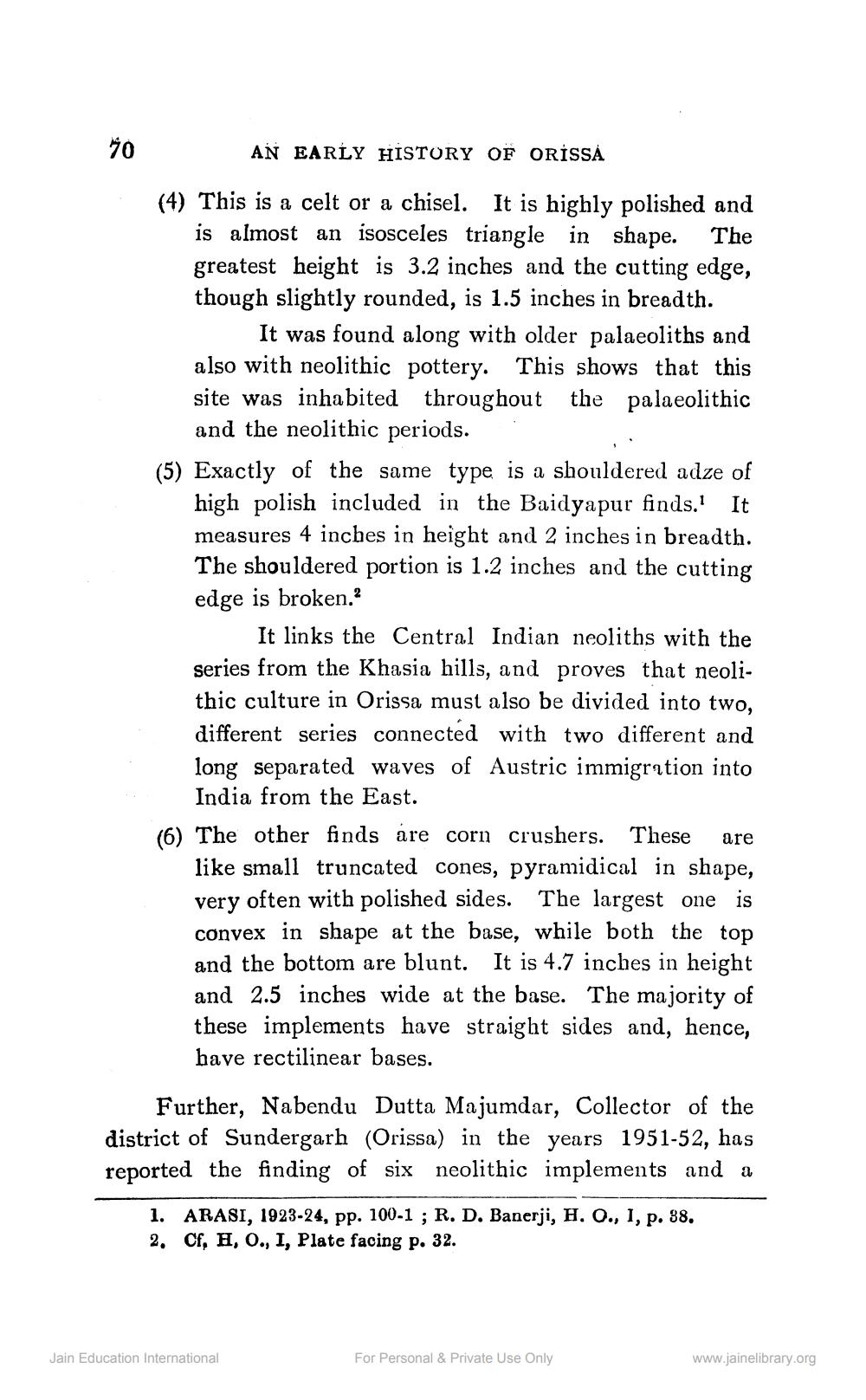________________
90
AN EARLY HISTORY OF ORISSA
(4) This is a celt or a chisel. It is highly polished and
is almost an isosceles triangle in shape. The greatest height is 3.2 inches and the cutting edge, though slightly rounded, is 1.5 inches in breadth.
It was found along with older palaeoliths and also with neolithic pottery. This shows that this site was inhabited throughout the palaeolithic
and the neolithic periods. (5) Exactly of the same type is a shouldered adze of
high polish included in the Baidyapur finds.' It measures 4 inches in height and 2 inches in breadth. The shouldered portion is 1.2 inches and the cutting edge is broken.
It links the Central Indian neoliths with the series from the Khasia hills, and proves that neolithic culture in Orissa must also be divided into two, different series connected with two different and long separated waves of Austric immigration into
India from the East. (6) The other finds are corn crushers. These are
like small truncated cones, pyramidical in shape, very often with polished sides. The largest one is convex in shape at the base, while both the top and the bottom are blunt. It is 4.7 inches in height and 2.5 inches wide at the base. The majority of these implements have straight sides and, hence,
have rectilinear bases. Further, Nabendu Dutta Majumdar, Collector of the district of Sundergarh (Orissa) in the years 1951-52, has reported the finding of six neolithic implements and a
1. ARASI, 1923-24, pp. 100-1 ; R. D. Banerji, H. O., I, p. 88. 2. Cf, H, O., I, Plate facing p. 32.
Jain Education International
For Personal & Private Use Only
www.jainelibrary.org




